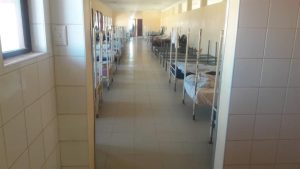 Namibia will shorten the quarantine period by giving people a single test for the coronavirus on the seventh day of the quarantine, and if it is negative, then the quarantine can end.
Namibia will shorten the quarantine period by giving people a single test for the coronavirus on the seventh day of the quarantine, and if it is negative, then the quarantine can end.
This comes as Namibia adopts a third-tier quarantine structure to help people get back to their normal lives sooner, and decongest the quarantine facilities.
Announcing the thrid-tier of the quarantine protocol in Windhoek Friday, health minister Dr Kalumbi Shangula said the new approach would also keep people safe from the virus.
Below are details of the third-tier structure:
Tier 1: where there is no community transmission, which is most of Namibia at the present time. The duration of quarantine is reduced from 14 to7 days in approved facilities. All to be tested at the end of the quarantine on day 7 and released on negative PCR. If a positive, the person goes into isolation.
Tier 2: where there is established community transmission, the length of quarantine is proposed to be a minimum of 7 days. Contacts would all be tested at the end of the quarantine on day 7 and released once a negative result is obtained. If a positive result is obtained, they would enter into isolation. Contacts would be allowed to quarantine at home if their home is suitable.
Tier 3A: Travelers arriving in Namibia. The length of quarantine is reduced from 14 days to 7 days in approved facilities. Travellers are expected to arrive with negative PCR-based results, not older than 7 days. They would only be tested on day 7 and discharged with negative results.
Tier 3B: Special dispensation under the “Tourism Revival Initiative”. The length of quarantine is 7 days in approved facilities. Travellers are expected to arrive with negative PCR-based results and tested within 7 days of arrival in Namibia. They will be tested on Day 5 and discharged on negative results.
It has been decided that the Isolation Protocol in Namibia, will adopt a 3-part threshold system:
Threshold 1: when more than 60% of health facility bed capacity dedicated to COVID-19 are available, ALL positive cases are managed in isolation units at COVID-19 designated health facilities regardless of the severity of illness.
Threshold 2: when more than 60% of the health facility bed capacity dedicated to COVID-19 are occupied by confirmed and suspected cases, only SEVERE and CRITICAL cases and those at higher risk of developing severe disease or complications due to co-morbidities will be managed at health facilities. All other cases will be managed in other designated and repurposed COVID-19 nonhealthcare isolation facilities. Currently, Erongo and Khomas Regions are in Threshold 2.
Threshold 3: isolation in health facilities would only be used for severe cases. Non-severe cases or cases at higher risk of developing the severe disease due to comorbidities will be managed in repurposed facilities. All other cases/persons who have living spaces that are amenable for home isolation would be allowed to do so.
Dr Shangula said COVID-19 non-health isolation facilities and home isolation will follow strict criteria outlined clearly in the Case Management SOP.
“After COVID-19 epidemic review of all available data, Case Management experts recommend a pivot
in Namibia’s de-isolation criteria. Currently, for de-isolation, Namibia uses a test-based approach and
requires two negative PCR tests taken at least 24 hours apart,” he said.









Comments